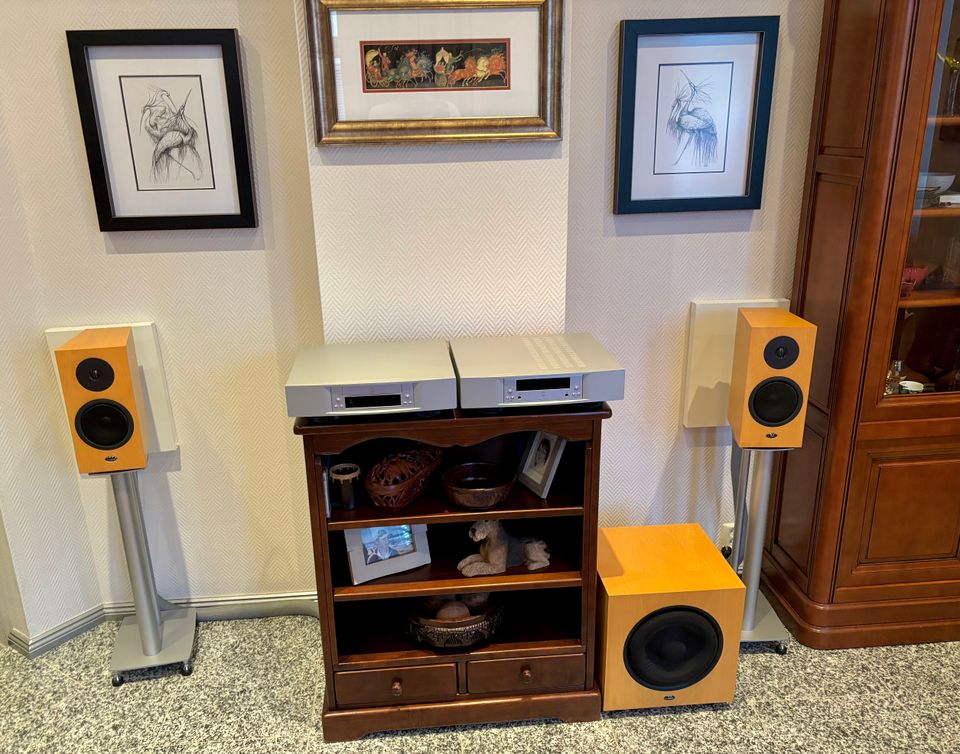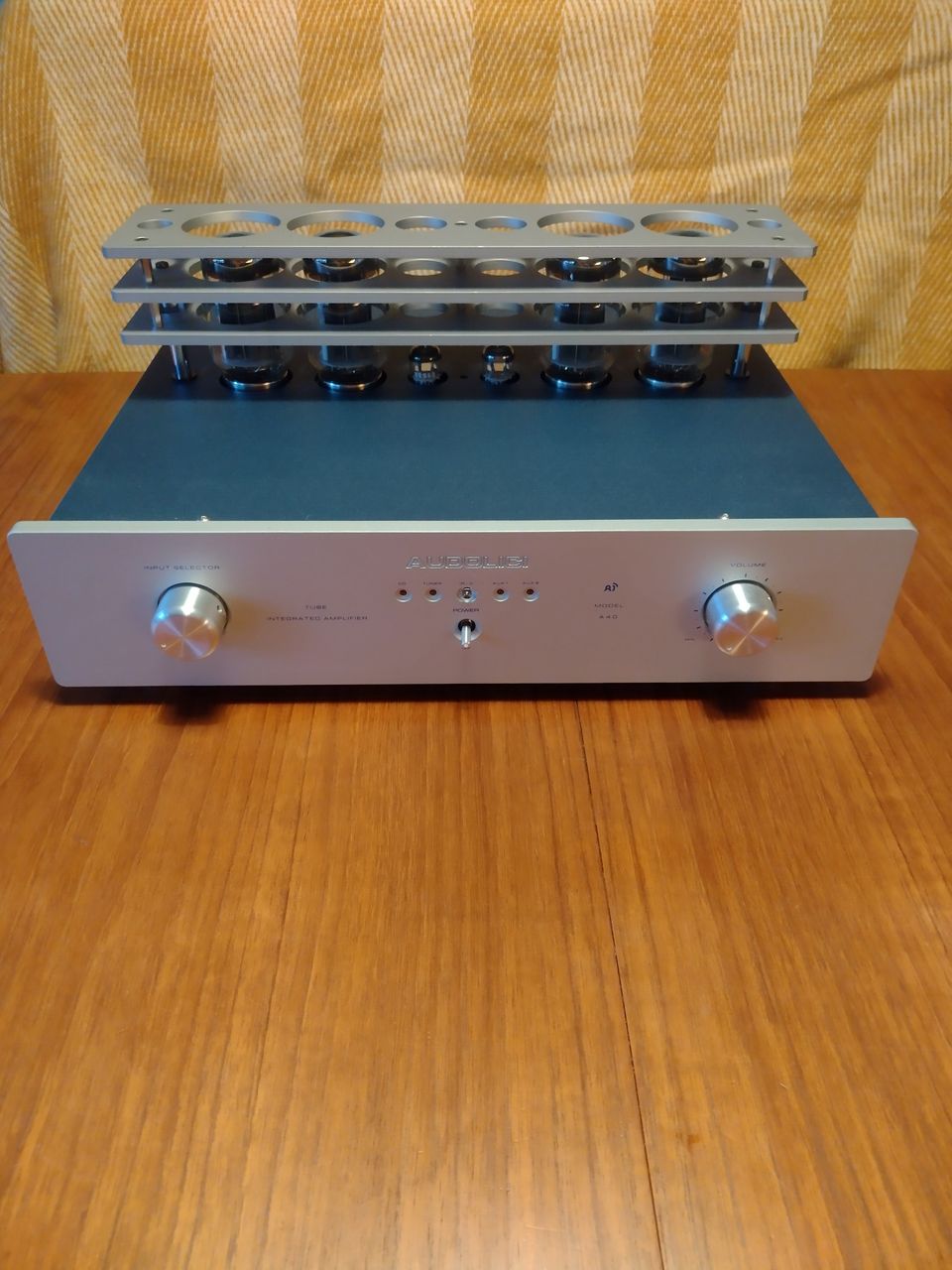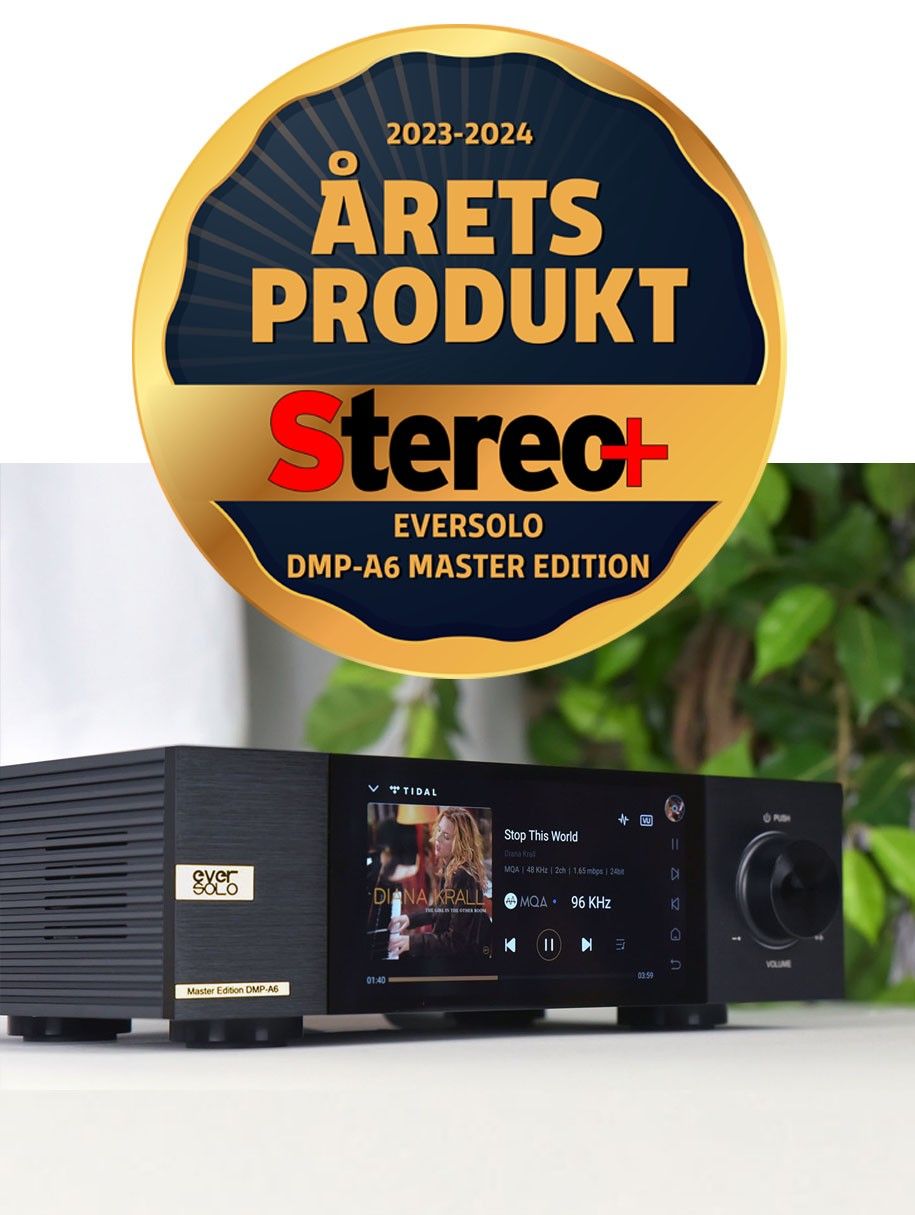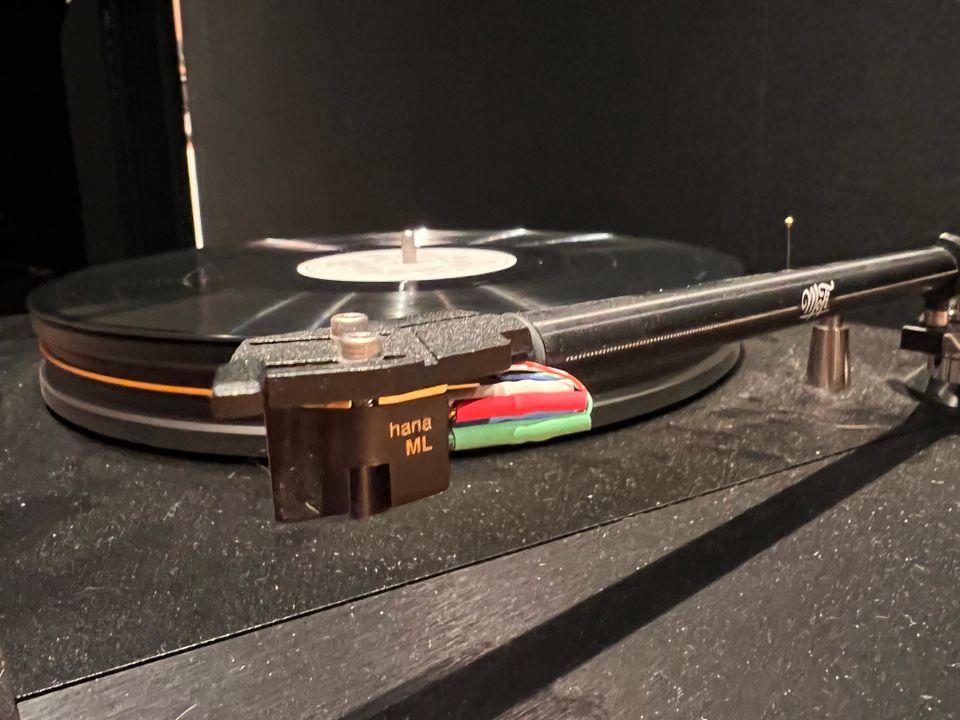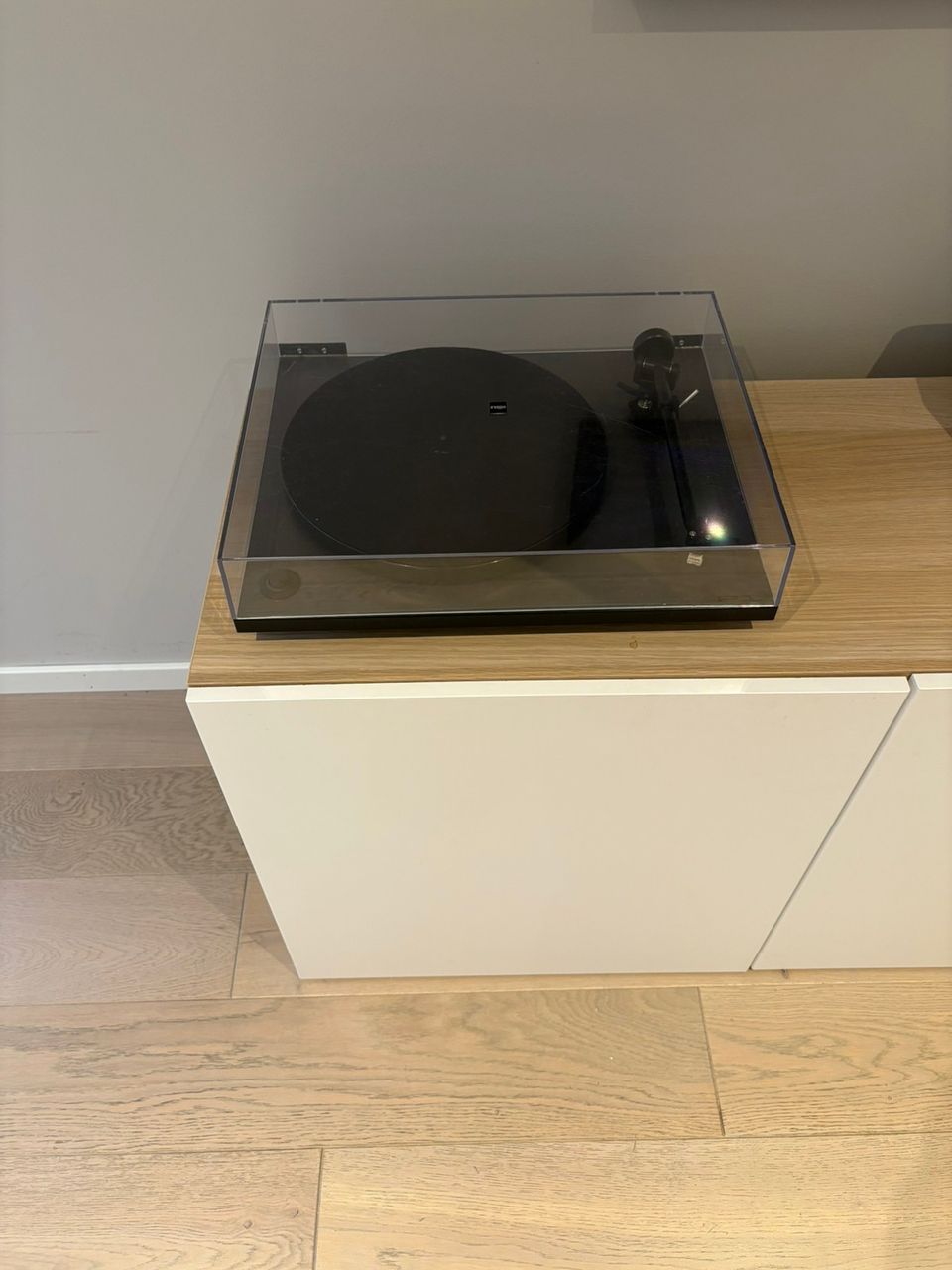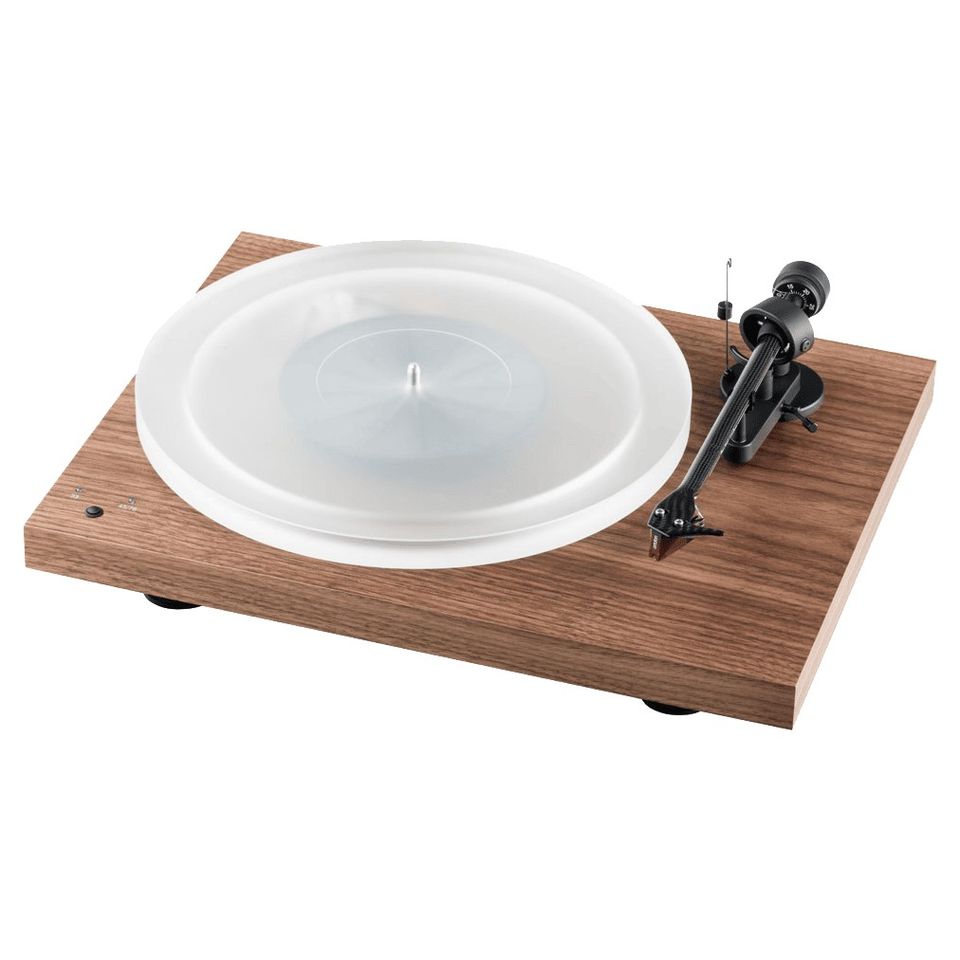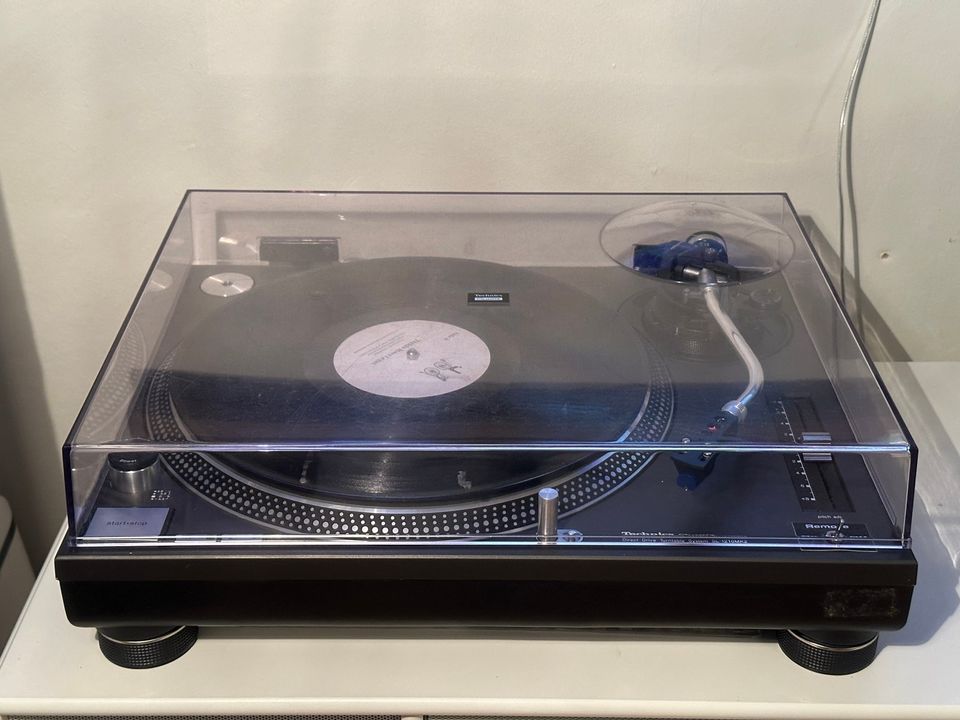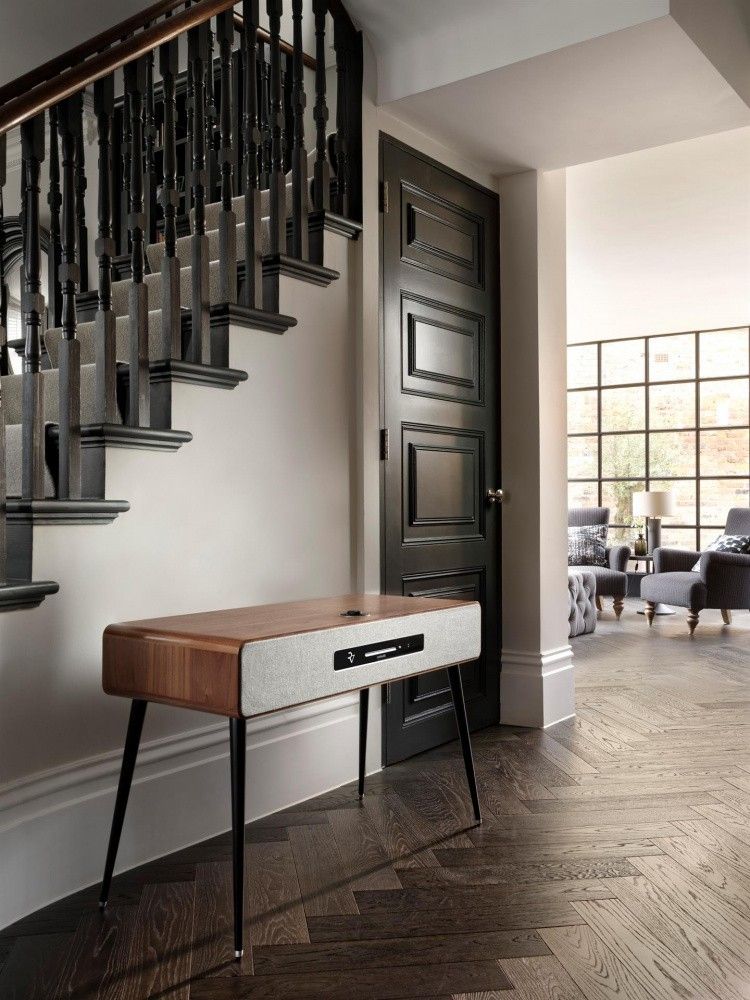Bildegalleri
Dohmann Helix Two mk II platespiller med Schroder CB 11 tonearm
Beskrivelse av varen
Type: Platespillere
NY PRIS. Evt del innbytte i hifi eller bil/ annet spennende.
En av verdens beste platespillere tilsalgs, her er en unik sjanse som ikke kommer igjen.
Denne er uåpnet i eske , jeg skulle legge av denne til meg selv som min siste platespiller men har ikke mulighet til å få brukt den på en stund, så da gir jeg muligheten til en annen.
Denne ble tatt inn av mitt firma Audio Art (www.audioart.no) da jeg var importør og jeg kjøpte den privat. Gå inn her å les om spilleren.
Den har Silver finish og topp spekket, det vil si Carbon topplate som må bestilles ved produksjon , koster kr 30000 ekstra.
Den har også det beste armboardet i Carbon som koster ca 35000kr ekstra.
Tonearmen er en Schroder CB 11 carbon som koster ca 85000kr nå.
Den siste prisen jeg har sett på spilleren uten arm og oppdateringer er 40000Euro.
Det vil si at prisen i Europa nå er ca 52000euro slik spilleren står her.
Dette blir omregnet i området kr600000+
Ventetiden da jeg fikk spilleren var ca 1 år , regner ikke med det er kortere nå.
Derfor selges spilleren med tungt hjerte. NY PRIS
Kr 320 000.
( Sale for 28000 euro complete, can deliver in Denmark , Sweden, North Germany).
Har også den perfekte pickup til denne inne, Etsuro Gold - få en pakkepris.
Ta kontakt for en prat hvis du er seriøs. 97771998.
Lifetime Achievement Award: Sound + Image 2018
Lifetime Achievement Award
HELIX TWO
Mk2
The Helix Two Mk2 incorporates the Döhmann Audio technologies into a smaller footprint with a single tonearm facility and is engineered to deliver unparalleled performance in analogue playback.
It is the result of many years of research, development, collaboration and listening by internationally acclaimed analogue designer Mark Döhmann and his team.
Mark identified the specific challenges of designing a new benchmark turntable and then explored what technologies exist in the world that address these challenges. After investigating solutions used in aerospace, spectrometry, medical imaging and electron microscopy, Mark incorporated these technologies into a new turntable design.
Due to its fully integrated MinusK vibration isolation system utilizing NSM and mechanical crossover technology, its ability to deal with vibration and resonance is unsurpassed and allows the music to be enjoyed with an outstanding level of realism.
The Helix Two Mk2 has a new custom designed Swiss-manufactured motor which incorporates the very latest technology around constant torque performance and quietness of operation. It is designed to operate flawlessly in non-ideal environments such as older houses with wooden floors, upper floors, attics where external vibrations are carried through buildings – even those made from concrete, steel, and brick. Due to its revolutionary vibration isolation system, it is also not dependent on a high-quality audiophile stand.
The design has made it possible to incorporate a level of engineering previously not possible at this price point and as a result, the Helix Two Mk2 is considered to be outstanding value. The more compact dimensions and one box design allow it to be used in smaller spaces and standard sized stands.
Often chosen by discerning audiophiles around the world as their reference analogue system, as well as being the turntable of choice for many high-end brands exhibiting in major international hi-fi shows, the Helix Two simply allows the music to flow and the full potential of the system to be achieved.
Reviews
SOUND STAGE AUSTRALIA
The Helix Two will keep you listening to music and re-experiencing its elevating pleasures. Mr Döhmann and his team have created yet another Aussie engineering and artistic marvel, further compounding Australia’s rep for awe-inspiring natural and man-made wonders…
LOTUS HIFI
…although it’s possible (but not provable) that it’s the best deck I’ve ever heard, it is most certainly, hand on heart, the very best turntable I have ever set up, sold, or had in my home.
SOUND AND IMAGE – TURNTABLE OF THE YEAR 2018
The wide-open world of sound it releases from a vinyl groove is spine-tinglingly staggering.
HAUTE FIDELITE 2018
It goes even further than what you thought you could expect from a turntable and the fact that it clearly outperforms anything that we have ever listened to until now is a huge surprise.
Awards
Dohmann Helix II Mk2 Soundstage 2019 Product of the Year
The Soundstage! Australia Product of the Year 2019
The Döhmann Audio Helix Two Mk2 has been selected as the winner of the SoundStage! Australia Products of the Year 2019 Award in the Innovation in Design category. This is an annual award given by the SoundStage! Network which places importance on a product that offers a point of difference in terms of unique features, advanced engineering or innovative design.
Specifications
Top Plate
All Helix Two Mk2 turntables come with a black anodized aluminium top plate as standard. A carbon fibre top plate is available as an upgrade which compliments the new optional Advanced Composite Armboard.
Armboards
All Helix Two Mk2 turntables come with a black anodized aluminium armboard as standard. The armboard is removable and to facilitate simple interchange and calibration. The Advanced Composite Armboard is available as an upgrade. The result of years of research and experimentation, it incorporates a material which mitigates resonance to a very high level, resulting in an even greater lowering of the sonic noise floor and enabling an even greater articulation of musical detail.
Tonearm Mounting
The Helix Two Mk2 turntable is capable of mounting one tonearm up to 12” (305mm).
Simple Operation
The Helix Two Mk2 is operated by two push buttons on the table surface for speed selection/on/off.
Speed Control
Speed is constantly calibrated over 130,000 times per second to deliver precise 33.33 or 45.15 rpm (factory default). Default factory set speeds are:
33 RPM
45 RPM
78 and other RPM’s are available by request
Simple user-adjustable speed control is accessible via two intuitive push buttons on rear of chassis.
Drive System
Fully integrated Swiss-manufactured high torque motor
Dual belt platter drive designed to reduce static electricity and vibrations.
Power Supply
The Helix Mk2 turntable has an outboard power supply.
Power Options
110-120 VAC, 50/60Hz 2A
220/240 VAC, 50/60 Hz 1A
Legacy
The Helix Two was launched at the Munich High End show in May 2017 and has been manufactured till August 2019.
The Helix Two Mk2 is the current version and has been manufactured from September 2019 onwards. It incorporates a new Swiss-manufactured motor made to Dohmann Audio’s specifications, new power supply, new electronics, new speed adjust functionality and some upgraded resonance mitigation technology.
Dimensions and Weight
Helix Two Mk2 Turntable
Width 480mm x Depth 400mm x Height 200mm
Width 18.9 inches x Depth 15.8 inches x Height 7.9 inches
Combined shipping weight is 70Kg (155 pounds) in a custom road case.
Recommended installation requires a surface capable of supporting up to 60Kg (133 pounds).
Set-up assistance and complete service available worldwide through authorized dealer and representative network.
SCHRÖDER CB-11 TONEARM
Frank Schröder is among a select few who make the finest audiophile tonearms in the world today. Each tonearm is meticulously built like a Swiss Chronograph with rare precision and craftsmanship. The reputation of Schroeder arms has been growing in recent years and they are now some of the most desirable arms available.
A Schröder tonearm sounds like no tonearm at all. Timbre and tonality of instruments takes on a new meaning. Across the entire frequency spectrum, this tonearm opens a door to a new insight into sound quality. If a high degree of fidelity and utmost naturalness is high on your list of sonic priorities, perhaps consider this tonearm as a standard of reference.
Unlike the unique magnetic bearing principle for which Schröder holds worldwide patents, the CB (Captive Bearing) series of arms feature hybrid ceramic bearings of unprecedented low friction (2mg vertical, 3.5mg horizontal). This is the lowest measured friction of any traditional bearing arm. With internal magnetic damping in the horizontal plane, the CB Tonearm has a calibrated center post to allow repeatable adjustment of VTA, adjustable azimuth and different headshell plates to allow adjustment of effective mass to couple with a wide range of cartridges.
One of the major influences in the sound reproduction of vinyl play back is mechanical vibration. After all, tonearms are basically mechanical devices. The CB tonearm is designed with defined physical zones within its infrastructure that focus vibrations away from key areas. It rejects vibrations conducted through the mounting plate that originate from other turntable components such as the motor, plinth, bearing, and airborne vibrations by diverting them away from the critical path.
The premise is to integrate a stiff, balanced mass structural coupling to the chassis. This effectively eliminates external excitation by generating equal forces to all sides of the arm, maintaining the dynamic stability of the system and preventing a deflection of the cantilever.
Features
The magnetically centred and pre-loaded ceramic hybrid bearings eliminate bearing chatter completely, therefore guaranteeing constant rigid structural coupling and silent ultra-low friction movement.
Unique system for lateral movement damped by eddy current induction.
Extremely low bearing stiction/friction through the use of magnetically centered and pre-loaded ceramic hybrid ball bearings.
Symmetrical mass distribution around the central bearing axes prevents external excitation to cause any cantilever deflection.
The geometry and mass balance prevents any change in VTF when altering VTA.
The bearing for vertical movement is on the same plane as the record, so the arm is immune to warp wow effects.
Wiring harness with extremely low dielectric losses allows mounting of any MM cartridges with proper capacitive load at the phono-amp.
Symmetrical layout of the conductors prevents RF and EMI from entering your preamplifier.
Multi-layer arm wand construction using carbon fiber and other composites creates extreme torsional and bending stiffness with very high internal damping factors. This prevents any signal reflection back into the cartridge.
A dual section counterweight is incorporated with an adjustable damping system. This allows tuning of structural vibration absorption to prevent signal reflection across the arm wand.
Specifications
Arm wand length 12 inches
Effective length (mm) 282.0
Pivot to spindle distance (mm) 267.5
Overhang (mm) 14.52
Offset angle 19.35°
Shaft diameter (mm) 23
Effective mass with supplied cartridge mounting plate (grams) 18
Effective mass with optional heavy cartridge mounting plate (grams) 23
Effective mass with optional ultra-light cartridge mounting plate (grams) 16.5
Arm wand material Carbon Fibre or Kingwood
Mounting hole 24-25mm with single M6 tapped hole
Ceramic hybrid bearing friction > 2mg vertically, > 3.5mg horizontally
Distance between mounting surface and platter level 25-60mm, best ~30-35mm
Balance characteristics Neutral balance arm, no change in VTF when altering VTA or record thickness. Internal magnetic damping for the horizontal movement
Adjustable Parameters
VTF
VTA
Overhang
Offset angle
Azimuth
Anti-skating – Frictionless, resonance free magnetic anti-skating up to 2.3 grams. VTF higher tracking forces can be compensated for by exchanging the anti-skating screw, upon request.
Wiring Cryogenically treated, low loss, high purity copper wiring. Single run from cartridge clips to RCAs. 1m length from arm to RCAs. (additional lengths available upon request)
Double Counterweight Lower counterweight can be exchanged to an optional lighter or heavier cylinder, allowing for an increase/decrease of total counterweight mass without altering the overall mass distribution of the arm. Adjustment to a fundamental arm cartridge resonance frequency of 8-12Hz yields optimal performance of the system.
Metal Colour Black
DÖHMANN AUDIO
Breaking the Sound Barrier – since 1982 –
We are music lovers and vinyl fanatics. We believe that to unlock the potential of the information contained in the grooves of a vinyl record and to experience absolute emotional engagement with an artist’s work, it takes an audio system where attention has been placed on the smallest details and time has been taken to perfect the design.
Inspired by the unique vision of audio designer Mark Döhmann, Döhmann Audio leads a no-holds-barred assault on what is possible in contemporary audio turntable & tonearm design. Acknowledging the legendary pioneers that have come before us, we look forward and strive to create the most advanced analogue audio systems available today.
Incorporating state-of-the-art technologies that have previously never been applied to audio applications, we create heirloom quality industrial works of art that aim to give our customers the ultimate enjoyment of their record collection.
Every Döhmann Audio product is made in Australia and is designed against the standard of perfect audio reproduction – live music.
WHAT MAKES DÖHMANN AUDIO TURNTABLES UNIQUE?
As the stylus of a cartridge moves through the groove of a vinyl record, the vibrations created by the groove are converted to electrical signals through a coil in a magnetic field. The electric signals are carried along wires to the amplifier which enhances the power of the signal. Since vibrations are converted into a signal which eventually is converted into sound, we can see that any extra vibrations that are picked up by the stylus influence the purity of the signal and hence the sound quality.
Stylus in groove on a record
In a mechanical system such as a turntable, energy in the form of vibration over a large range of frequencies is present. Some vibrations originate from the external environment and are transmitted through the building structure and through floor into the playback system. Other vibrations are caused by people moving near the system or by bass transmitted through the floor. Some vibrations are transmitted through the air and some vibrations originate from the mechanical system itself like the motor, the bearing or the actual stylus interacting with the record. Vibrations interact with each other, resulting in all sorts of complex vibration patterns within the playback system. Ultimately these unwanted vibrations mix with the vibration of the stylus in the groove, causing distortion and unwanted sonic artifacts.
Therefore, the Holy Grail of analogue audio design is to eliminate as much of the unwanted vibration (resonance) as possible so that the stylus can interact with the groove and ONLY with the groove, thus picking up all the musical information without interference or influence by any other phenomena. It is actually impossible to completely eliminate all unwanted vibration, but the more successful you are in reducing it, the better the sound quality achieved. All turntable designs attempt to deal with these resonances to some degree.
What makes Döhmann Audio unique is the extreme effort we go to ensure that these unwanted vibrations are kept away from the signal path.
For example, to isolate the Helix One and Helix Two turntables from ground transmitted vibration, instead of using common suspension systems based on springs, rubber, plastic, foam, air or spikes which have serious limitations, Döhmann Audio use a revolutionary Negative Stiffness Mechanism (NSM) from MinusK Technology USA who developed this isolation technology for electron and atomic force microscopy and other applications that are very sensitive to resonance. This significantly mitigates low frequency vibrations up to approx. 100Hz.
If we simply place a turntable on a MinusK platform (as many people do), it helps to reduce low frequency vibration but frequencies above 100Hz get transmitted through the platform to the turntable. The turntable’s own built-in isolation system then needs to be specifically tuned to deal with these higher frequencies. Most turntables are not designed to specifically sit on an isolation platform and work completely in harmony. One example is the rotating platter mass at 33rpm will have a natural frequency of 0.55hz. So the turntable itself will generate its own “seismic” vibrations. This is a major source of noise being created by the very system a designer is trying to isolate from the external world.
Spinning Top (diagram a)
Then add the greater issue of tall heavy platter systems sitting high on a 6 degree of freedom (x,y and z axis) compliant low frequency isolation system like the MinusK and you will see this causes precessional instability due to the high centre of mass of the platter behaving like a spinning top children’s toy toppling about. This is why just adding a MinusK to your existing turntable is not the same as the Helix architecture.
Spinning Top (diagram b)
The Helix 1 and 2 cleverly distribute the table mass around and below the MinusK internal mechanism to lower the center of mass and deliver unparalleled stability in the platter precessional modes via a low-slung greater mass than the platter mass. This is one reason why the Helix is “not just a platter stuck on a MinusK”. The spinning platter mass is being stabilised in a greater chassis mass distributed low and evenly.
Solid mounted turntables do not isolate well. They try to use mass to absorb vibrations. Some demonstrations might show vertical stability based on the floor and bench mounting being solid in the vertical plane but on flexible wooden floors these designs suffer. Horizontal vibrations are also present in the environment (just ask anyone living in tall buildings or in cities affected by the tectonic forces that cause earthquakes and tremors). This problem also affects laboratory instruments such as electron and atomic force microscopes which like a phonograph cartridge are very susceptible to vibration intermodulation distortion.
In addition, the higher frequencies often interact with the turntable’s own isolation system which causes further problems. To avoid this, Döhmann Audio worked with MinusK to create a special version of the platform that is tightly integrated into the turntable chassis to create a seamless transition from low to high frequencies. The isolation system is a part of the entire mechanical structure so there is no unplanned interaction between two disparate systems.
The critical question then becomes, what about the frequencies above 100Hz?
Here’s where the Döhmann technologies come into their own. The Helix turntables have a mechanical crossover system which creates a smooth continuous pathway to channel vibrations of higher frequencies away from critical areas on the turntable. The proprietary TDS technology uses a pre-stress accumulation release (PAR) strategy to isolate and dissipate vibrations inside the chassis.
Furthermore, the motor, bearing and armboard are on separate plates that are significantly isolated from each other, making it extremely difficult for energy to transfer between these critical areas. A unique arm board damping technology is used which further dissipates energy and is a major contributor to the sound quality.
We call this entire wholistic approach our Micro Signal Architecture© (MSA). MSA is a cohesive design approach that uses the most advanced available techniques to remove physical and mechanical vibration and electrical noise.
So well beyond simply integrating a MinusK isolation platform into a chassis, Döhmann Helix One and Two turntables incorporate the latest resonance mitigation technologies available to ensure that the stylus of your cartridge has the greatest chance of extracting the vital information from a vinyl record without suffering the effects of unwanted resonance. These technologies have never been applied so comprehensively to audio playback systems before and are not available any other commercially available brand of turntable.
Is it worth all this cost and effort? If you are searching for the most direct connection to the emotional message of the music, if you are looking to experience the purest enjoyment of your analogue music system… we think so!
REVIEWS
Döhmann Audio Helix Two Turntable
Details
Written by Edgar Kramer
Category: Reviews
Published: 15 August 2019
Over a decade ago, as vinyl began its unstoppable bloom, I had the privilege of being one of the first reviewers to enjoy a private audition of a new revolutionary Australian über high-end turntable. That landmark product was the Continuum Caliburn and it subsequently rocked the top-end-of-town in analogue playback. A collaborative creation, the Caliburn was the offspring of advanced engineering by some of the best specialist minds in the industry. At that session, I interviewed one of its key designers, Mark Döhmann, who generously shared detailed insights while also enlightening me on the profound and innovative engineering he applied across many aspects of that unique product. Now, after much water under the bridge and having risen Phoenix-like, Döhmann returns with a new endeavour and yet another innovative design which promises, once again, to elevate analogue playback around the globe.
In Orbit
The first product Döhmann Audio introduced was the flagship Helix One now followed by Helix Two, the newest addition to the company’s stable. The two ‘tables share many design aspects, of course, not least the floating architecture of both platter and armboard. Although the Helix Two may be a somewhat downscaled version of its up-tier sister product, there is little, if any, noteworthy compromise.
In fact, the Helix Two is super solid both physically and in terms of its considerable engineering. Once again, Kyron Audio’s talented Lee Gray stamped his moniker on the Helix Two’s industrial design, post his terrific effort on Helix One. The gifted Grey has managed to carry across aesthetic design cues used on Helix One and adapted them to the smaller sibling while being mindful of Mark Döhmann’s engineering requirements. There are commonalities in DNA making for Helix Two’s recognisable styling as part of the Döhmann family.
The Helix Two is a dual belt-driven design using a massive high torque Swiss-manufactured motor. It accepts one tonearm of up to 12 inches. Being custom software-driven, a mini-USB port on the turntable’s underside allows computer connectivity in order to adjust a number of parameters. Aside from speed control refinements, the software can adjust revolution stop/start timing, etc. These settings are set-and-forget.
Designer Mark Döhmann visited the day after the ‘table was safely delivered in its high quality road case. The road case provides safe passage for the units’ travels while also snuggly accommodating all the accessories within bespoke compartments. A very nice touch: all Helix Two turntables ship with a small bottle of Tasmanian Sullivans Cove Single Malt Scotch whiskey. Not saying it was consumed in a blazing gulp before the ‘table reached 33rpm but it was close… Smooth.
Dohmann HelixDigital in aid of analogue: Sharpshooter Mark Döhmann aligning things to perfection.
Döhmann spent considerable time adjusting all parameters of the Schröder CB Carbon Fibre arm (AU$8000) and My Sonic Lab Signature Platinum cartridge (AU$17,786) provided for this review while also generally making sure all aspects of the Helix Two were AOK. Regarding tonearm options – while Döhmann Audio recommends the Schröder arm, the company is happy to quote on bespoke armboards for your preferred tonearm (Döhmann Audio states on its website that popular arms from companies such as SME, Kuzma, Graham Engineering, etc. have been successfully used with Helix One and Two).
I took the opportunity to ask both Mark Döhmann and new business partners George Moraitis and Jim Angelopoulos – both experienced audiophiles, music lovers and entrepreneurs with a strong vision for the company – several general questions followed by some more specific ones relating to the Helix Two’s ideologies and their juxtaposition with regards to Helix One.
In order to achieve the sound quality that we strive for, we have implemented the same technologies into both models. In the Helix One, we have simply taken the implementation of those technologies to a higher, more extreme level. This is great news for owners of the Helix Two because it contains all of technologies that are unique to Döhmann turntables. The Helix Two shares the MSA Micro Signal Architecture with the Helix One platform. This includes the full Minus K technology-sourced custom Negative Stiffness Isolator built to fit inside the chassis of the Helix Two.
The TDS Tonearm Damping System using PAR PreStress Accumulation Release has been adopted and implemented inside the Helix Two and the bearing and platter design is also identical to the Helix One platform. The twin durometer belt drive system is also identical to the Helix One platform and the chassis design uses the same multi-plate technology as the Helix One. As a result, both models exhibit the sonic characteristics that the Helix turntables are renowned for.
Being Australian designed, I wondered what level of local manufacturing applied to Helix Two…
Döhmann Audio has steadily progressed towards full Australian-based manufacturing. Our motors are Swiss-made to our specifications by a specialist high-end motor specialist and our isolation platforms are made by Minus K in the USA to a special design which allows total integration with the turntable and the tuned resonance dissipation plates. These will remain the only internationally sourced parts. At the moment, we still have some steel legacy parts coming in from Thrax Audio but that is coming to an end soon. We are fortunate to have established relationships with leading Australian partners who have the same obsession for quality that we do. Our alloys are sourced from aeronautical grade suppliers with local defence department approved MILSPEC plating suppliers providing the required surface finishing.
Our Carbon Fibre parts are sourced from highly skilled (ex-Formula One Mercedes Arrows Team trained specialists) carbon fabricators in Melbourne. This move back to a single Australian facility makes it possible for all Helix owners globally to be able to interact with a single point of contact for service and support.
Seeing his recent coming on-board as an owner and CEO, I asked Moraitis what his plans and aspirations for Döhmann Audio were going forward.
When I first heard a Döhmann turntable, apart from the sonic ‘wow factor’, I felt immensely proud that a very small Australian company was creating products that were considered to be at the very top of their genre. I discovered that due to economic reasons, Mark was designing turntables that were then being made in and distributed from the Thrax Audio factory in Bulgaria. It was important to us that our turntables were made in Australia, so my first project was to transition the manufacturing from Bulgaria to Australia. We have now almost completed this transition. We source our motors from Switzerland, our isolation mechanisms from the USA, however all other aspects of research, testing, manufacturing and assembly are now carried out at our new facility in Melbourne and this has resulted in the employment of Australian people making an Australian product. Our next focus is to create a great ownership experience for our clients and cement Döhmann Audio as a premium brand. This includes aspects like sonic performance, reliability, customer support and an upgrade path which ensures that our clients’ turntables remain at the top level of performance available. Our turntables are considered to be heirloom pieces and we are very proud that we rarely see a Döhmann turntable for sale on the second-hand markets around the world.
If I was asked to describe the spirit of our company in one word, I would say ‘innovation’. The team is perpetually identifying possible areas for improvement and then trying out different technologies, listening to the results and refining. This approach is resulting in the standards being set even higher and it will be what we continue to do in the future.
With Moraitis’ now sharing the leadership, opportunities now present themselves for Döhmann to dedicate more time and focus on design and product engineering. I asked Mark Döhmann what are the near future plans, product wise, for the company and are there plans for non-turntable-based products?
The arrival of George Moraitis and Jim Angelopoulos in November 2018 has resulted in unprecedented progress for Döhmann Audio. I am now able to exclusively focus on product development and manufacturing. One of our strengths has been our engagement with the wider scientific research community. I have now been able to develop relationships with some universities and engineering research firms, which is providing us with information, research and resources which will continue to drive the sonic breakthroughs Döhmann Audio are recognised for. Several new innovative products are under development at the moment which will extend our product range and capabilities into new markets. These are exciting times!
Finally, I asked opinions on what analogue playback offers that perhaps digital playback doesn’t?
This is an interesting question and brings into play subjective experiences and factors such as each person’s individual sensitivities, listening preferences and tastes. Digital playback at its best is much better now than it has ever been, however in our opinion, analogue playback continues to offer some significant advantages. In our experience, well-designed analogue facilitates a deeper level of engagement with the artist’s message. It has an uncanny ability to sound more natural and connect us more effectively with human emotions. It must happen on a deeper chemical level inside the human brain. A great analogue system exposes the micro-detail, nuances and timbrel elements of music and voices in a way that makes it more ‘believable’ so it is easier to stop ‘thinking’ and just ease into the flow of the music.
Over the years, we have spent countless hours listening to music with friends, enthusiasts and clients all around the world. Real music lovers who just want to get a great sound and don’t care in the moment which format is being used. We have often observed that the listening sessions that go the longest and that people remember more are with the analogue sources. Putting all the technical aspects aside, we feel that analogue is simply more real, believable and ultimately more emotionally satisfying.
A Plus 4 Minus K
The Helix Two is based on a Minus K anti-vibration fully-floating platform which has been incorporated into the ‘table chassis’ innards and has been designed to work in conjunction with a number of additional technologies. Externally, the look is of a massive plinth structure supporting the platter. While the rectangular shape may make Helix Two seem rather conventional in terms of its form factor, there are several engineering aspects which make it a rather unusual and deceptively complex design. For starters, the plinth itself is CNC machined from solid aluminium, weighs 50kg and is connected to the Minus K system via a series of tuned interlocking plates.
The Minus K itself is a system used by a wide range of high-tech industries including organisations in the aerospace (including NASA), medical, scientific and research spaces and many more. Minus K’s Negative-Stiffness Vibration (NSV) isolation technology combines a specific custom spring system with the company’s Negative-Stiffness Mechanism (NSM). Minus K’s strategies encompass the combination of tilt-motion, horizontal-motion and vertical-motion isolation.
Dohmann Helix
As far as the NSM acronym goes, the technology deals with the way certain materials “which are placed under load a force does not monotonically increase with displacement”, something referred to as “negative stiffness”. The Helix Two’s Minus K Technology isolation system employs negative stiffness “alloy flexures” to stabilise a single low frequency vertical coil spring to form a high performance Vibration Mitigation System without the need for air or electricity. The Minus K website features a wealth of technical information and white papers which thoroughly describe the philosophies and engineering behind the products. Many of these technologies have been adopted and modified by Döhmann Audio in order to implement them into the Helix One and Helix Two.
The Helix One employs a proprietary ‘Tonearm Damping System’ (TDS) solution which forms a semi-active damping system to further lower the noise floor of the overall system. The technology, used in early Döhmann turntables since 1985, is now further refined and uses a pre-stress accumulation release (PAR) strategy to mitigate vibrations inside the chassis caused by motor bearing and platter bearing noise. It creates a path of least resistance for vibrations, channels them away from the critical signal path zones and dissipates the energy.
The Helix Two is fitted with a strategy called ‘Pre-Stress Accumulation Release’ which constrains the relative slip between layers of plates. The strain accumulated in the structure locally is released as it occurs which results in conversion of a part of the strain energy to the kinetic energy of local, higher frequency vibrations. These higher frequency vibrations are then sunk into heavy damping materials which absorb and convert these to heat. Equilibrium is quickly restored to allow the structure to return to the initial state by means of a gradual release of the pre-stress accompanied by the frictional dissipation in the contact surfaces. This architecture is used as a Mechanical Crossover to selectively reduce each band of frequencies.
A Döhmann Audio-designed dual ‘Durometer’ belt arrangement drives the massive ‘Tri-Modal Platter’ system (TMP). In a cool kinda way, the platter smoothly ‘gives’ under downward pressure then gradually returns to its upper position as the Minus K comes into play. Its movement is masked by an aluminium surround matching the Helix Two’s chassis finish. The TMP system is basically a method of fabricating the 15kg platter in a way that controls resonance modes.
Dohmann Helix
Micro Signal Architecture (MSA) is a design approach using advanced techniques in order to remove vibration and electrical noise, something that is fundamental to retrieving the smallest signals from the microgrooves in an LP.
The top plate is provided in black anodised aluminium while an immaculate gloss carbon fibre top plate can be ordered as an optional extra (AU$4560). Ditto for the armboard which is, again, anodised black aluminium with the composite and carbon fibre being an option (AU$4500). Post designing the ‘Advanced Composite’ and carbon fibre armboard, listening tests by Döhmann and Moraitis confirmed, to their surprise in terms of its extent, that there were substantial sonic benefits to the fibre option. Below, I state my views which concur with their own.
Moraitis’ and Döhmann’s findings are actually not that surprising considering the efforts and determination behind the design and construction of the carbon fibre armboard. Mark Döhmann summarised its design thus:
The carbon fibre armboard is a proprietary layup with final high gloss weave, specialised high damping material. It’s a high tensile shell plate in a proprietary weave of bullet-proof material constructed of custom polymer cross woven sheets in multiple layers. This is as used in ballistic protection plates and high tensile steel plate. Each plate is then pre-stressed in specific places to change the modal performance. This creates a major reduction in noise compared to contiguous cast materials.
DohmannCarbon Fibre armboard upgrade shown here with Vinyl Record Cleaning Company's VRC Stylus Tip Cleaner.
Helix Two features a high quality 1.5m captive dual RCA cable terminated with good quality Furutech connectors. Operating the Helix Two is child’s play. Basically, there are two dual-LED buttons on the platter’s left-hand-side which serve to activate the motor. Both buttons are backlit ‘red’ when the ‘table is inactive. Pressing each of the buttons lights them in ‘green’ and toggles between 33rpm and 45rpm (a 78rpm motor is available as an optional extra). The table then starts its revolution and reaches the selected speed in the time that was preset via the set-and-forget USB setup procedure. Stopping playback is a matter of pressing the corresponding button which in turn lights up red, with the platter going static, again, within the preset time. Oh, a heavy machined puck – in matching colour to the ‘table (nice touch) – screws on to gently downward-press your precious vinyl. And that’s all folks… Simple!
The review sample was provided in an attractive new ‘Titanium’ finish with an upcharge of AU$4500 over the standard – and also beautifully done – silver and black anodised. Overall, the Helix Two’s fit and finish standards are extremely high and, budget permitting, I would highly recommend the carbon fibre top plate option – it’s absolutely immaculately done and looks a million bucks.
Before I start on my listening impressions, there’s something that needs to be stressed in no uncertain terms: The Helix Two (and Helix One for that matter) is NOT a composite of a turntable sitting atop an integrated Minus K system. That oversimplification would be misrepresenting the overall design and engineering that went into creating the Helix Two and its suite of technologies (do yourself a favour and explore the ‘Technology’ page of the company’s website for a very enlightening read). As Moraitis put it:
When you place a turntable on a Minus K platform, it creates a new resonance pool (micro-environment) between the surface of the Minus K and the suspension system of the turntable. In our experiments, we measured these effects as having a destructive influence on the sound and led us to work with Minus K to design a mechanism that fully integrates into a turntable chassis, which eliminates this problem. Placing a Minus K under your turntable results in an improvement in sound quality however it does not compare with a Helix design. A Minus K only mitigates vibrations up to 100 Hz. There are many common resonances that occur above 100 Hz. Helix turntables are designed to accurately pass on all ground/chassis borne resonances >100 Hz to a system of tuned resonance plates that eliminate the higher frequency resonances, something that cannot be achieved by the simple placement of a turntable on a Minus K system.
My Sonic Lab
Some components have an overt quality which, all things being equal, I hone-in on from the get go; the Helix Two’s (H2) jumped at me straight away. And the word “jumped” is super appropriate here. The H2 has a rhythmic, propelling and toe-tapping ability which makes you feel like getting up and boogying along with it. It’s an expertly balanced aspect, however, because it’s not achieved via pulling or pushing of any frequency band but rather by controlling the low-end to a freakish extent. I’m talking bass that is super-tight and detailed with blinding transient attack at the notes’ leading edge.
The Beatles’ “Come Together” from Abbey Road’s recent 180g pressing presented that renowned hanging low bass note with power and superb definition while the thud of the kick drum pounds your chest. There’s plenty of skin-on-pedal-beater texture there, going a long way to tricking you into believing there’s a real drum kit in the room. Dynamic contrast was arresting, as was the oh-so-important beat-bopping boogie factor. This last, in particular, is no mean feat, as I’ve found many turntables lacking in this department, to varying degrees.
So there’s a broad textural richness to the Helix Two that applies across the bandwidth but if I may stick to the bass for just a tad… the refined Gold Note remaster of Ensemble Operarmonica’s Carillon LP showed the full spread, deep and high, of the superbly-captured organ. It was visceral. Having said that, the subtle delicacies of the accenting flute were easily discerned with timbrel beauty and fine nuance juxtaposed against the brutality and majesty of the full-blown organ.
Dohmann Helix
The gritty, wailing vocals in “Sugar Sugar Sugar” and “Up Jumped the Devil” from Nick Cave and The Bad Seeds’ Tender Prey LP cut through with accuracy and superb separation. Dynamic contrasts were stunningly real, with the authority of Cave’s fortes and the power pulses of the music passed on from H2 to the amplification and speakers in a most authoritative manner. This is meant to be incisive, even confronting material and if the source is deficient in terms of its resolution and dynamic powers, Cave’s expressive sentiments would be lost in the musical mayhem, especially in light of the somewhat pedestrian overall production. Not with the Helix Two. The turntable package is precise and unwavering in its generous presentation of pure music with all its scars and pain intact. True, honest communication here…
The Cure’s Standing on a Beach shows a kaleidoscope of the band’s varied singles, from its early guitar-based music right up to their mid-life dreamy pensiveness a few years prior to their disbandment (but recently revived and toured in Australia). Again, all the anguish and sorrow in Robert Smith’s vocals on “Charlotte Sometimes” is clearly interconnected with the music, the H2 separating the complex strands while leaving the feel intact. On one of my favourite early tracks “Jumping Someone Else’s Train”, the rhythm of the fast-paced track is stunning… this is yet another of the H2’s most excellent qualities.
David Oistrakh’s handling of Sibelius’ Concerto in D Minor for Violin and Orchestra, The Swan of Tuonela, with Eugene Ormandy conducting the Philadelphia Orchestra, showed the master violinist’s exquisite musicianship by retaining and displaying all of the detail and intricacies of his technique. The violin’s tone from lowest to highest notes was precisely reproduced with accurate mix of string and wooden body. Ditto for the orchestra’s grandeur which spanned across the room and well behind the speakers in a massive soundfield.
The atmospherically-mellow tones of David Sylvian from Japan’s Exorcising Ghosts – in particular “The Other Side of Life” and “Ghosts” tracks – is communicated with all its compelling emotive power. Sylvian’s voice undulates in tone and oscillates in intensity, surging back and forth, and H2 captures all the ripples, creating a powerful swell as the music escalates to the chorus. Despite it being a 1980’s recording – and although decent, it’s not brilliant – with the H2 you forget about the OCD aspects of production and you are swept away with the beauty and poetry of the music. Science meets art. That, for me, is what exceptional Hi-Fi is all about.
Carbon Foot Print
A few weeks later, Mark Döhmann once again made the trip to SoundStage! Australia HQ in order to swap the standard armboard for the optional upgrade carbon fibre (CF for short) armboard. The exercise was simple enough, only taking a few minutes as far as the refit with a subsequent re-tweak of all the associated parameters.
Playing the same track from Grace Jones’ Nightclubbing which we spun just prior to the swap served as a clear and undeniable indication of the powers of the CF armboard. As good as the performance was prior, the CF upgrade just brought that extra layer of micro-detail to the forefront. It was a slightly more nuanced presentation, not just in terms of the minutiae but also in the finer tonal cues of low level information. The extra clarity in those areas brought about an added believability to the gradations and modulations of the intricacies in the music.
Although subtle, I’m convinced there was also an improvement on the already sublime rhythmic qualities of the metal armboard. Fine pace and bass tightness, with added nuance, were the CF armboard’s by-products. Overall, finances permitting, I would recommend the upgrade to the carbon fibre armboard as being a solid investment in terms of performance.
Conclusion
I had the pleasure of having the Helix Two turntable in situ for more than two months. During that time it functioned flawlessly. All parameters and settings remained solidly locked-in, further evidence that, tonearm notwithstanding, once set-up at the time of purchase you’ll need not fuss again unless you wish to.
With the convenience and simplicity of its operation aside, you’ll get on with enjoying the pleasures of the Helix Two’s considerable sonic qualities. Standouts were the ‘table’s toe-tapping PRAT (the much debated Pace, Rhythm and Timing phenomena), its superb handling of low frequencies which were always nuanced, powerful and precise, the accuracy of its tonal capabilities and the literally stunning dynamic expression, among many other things (some of these being also a function of a well-matched ‘table, tonearm and cartridge package).
Dohmann Helix
For those with the resources to consider an analogue rig in excess of AU$60K (or even more depending on your choice of tonearm, cartridge and phono stage), the Döhmann Audio Helix Two will please for many years – it’s built to heirloom-lasting standards – without provoking a desire to explore further afield (unless the attraction of Helix One’s dual arm capability is an irresistible temptation). In addition, it will provide the sonic pleasures of packages costing well above it, even ones hovering around the century $ mark. In the world of high-end audio, many would see that as good value, relatively …
However, the most important thing for this writer – and I believe all you readers out there too – is that the Helix Two will keep you listening to music and re-experiencing its elevating pleasures. Mr Döhmann and his team have created yet another Aussie engineering and artistic marvel, further compounding Australia’s rep for awe-inspiring natural and man-made wonders…
Du må være logget inn for å se brukerprofiler og sende meldinger.
Logg innAnnonsens metadata
Sist endret: 20.10.2024, 12:18 ・ FINN-kode: 316805847

